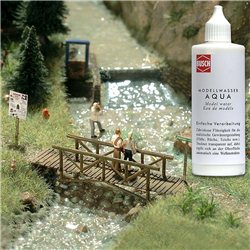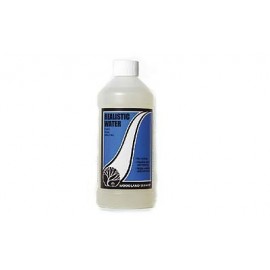How long it should take to construct a model kit may seem like a question that can't be answered as it of course...
No products
Product successfully added to your shopping cart
There are 0 items in your cart. There is 1 item in your cart.
Search Tips
Christmas and New Year
We are dispatching orders every weekday apart from Christmas Day, Boxing Day and New Year's Day.
If you order is time critical, select next day delivery at checkout.
The shop in Sandown is closed from 25th December, reopening on 30th December.
How can I best create wet road surfaces and pavements on my layout to simulate a rainy day?
Simulating seasonal variations is a common theme for many modellers who wish to model specific times of the year, such as a sunny summer's day on the beach or a winter scene such as a Christmas sleigh ride. Modelling a rainy day is perhaps not the most obvious choice for a layout but with a little care and creative thinking can be a very interesting approach to take. One of the benefits of modelling a rainy day is that it can occur at any time of year and inevitably can be applied to a great variety of layouts regardless of the theme.
Modelling a rainy day can add an interesting layer of detail to a layout and can easily be achieved by using a variety of techniques as detailed below.
- Adding an appropriate colour or tint: Inevitably most surfaces will look slightly darker after recent rainfall. This can easily be mimicked by applying a slightly darker colour, tint or wash to certain surfaces such as roads and pavements, thus simulating fresh rainfall. Powders and textures can also add another interesting layer as they can simulate associated effects such as churned-up mud on a rutted country track.
- Adding an appropriate varnish: Adding a varnish can be used in a similar way to the application of colours or tones previously mentioned. A satin varnish will apply a lustre to a surface that can be incredibly effective in hinting at recent rainfall. A gloss varnish can be used to indicate a more recent or heavy downpour or indicate a saturated surface. If carefully applied on a trial-and-error basis gloss varnishes can provide the impression of a wet surface simply by providing a degree of reflectivity of what would otherwise be a dull or matt surface texture.
- Adding an appropriate medium: In many instances, there are always pockets of standing water that remain or pool in appropriate locations after a heavy downpour. These can be easily modelled by using an appropriate acrylic or similar medium such as 'Realistic Water' by Woodland Scenics or 'Model Water' by Busch . These mediums are very effective at simulating standing water. Although they are highly glossy in finish, they are also transparent allowing surface details to remain visible. Additionally, as they are intended to self-level on application, they will be highly effective at simulating flooded areas or pockets of standing water.
- Adding appropriate scene elements: Creating the impression of a rainy day is in effect a visual layer applied to a layout and as such works well with appropriate scene elements. One of the best ways to infer the concept of 'Rainy' is to use figures or appropriate cameo scenes. Adding a selection of figures hurrying to and fro in coats whilst hiding under umbrellas immediately conveys the impression of a rainy day. Add to that a group of people huddling under available cover, such as a bus shelter or a shop awning and the impression of a rainy day is overwhelming.
Overall, creating a realistic wet look on your model railway layout requires experimentation and creativity. Using a combination of techniques such as colours, varnishes, powders, acrylic mediums and appropriately themed figures can work extremely well in creating a suitably rainy effect for a layout.
Click here to receive the tips weekly in your mailbox. You can unsubscribe at any time.










